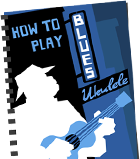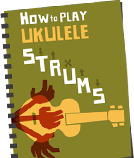I’ve only been here a few months, but I’m already starting to hate Derby. For one thing, there are only ten people in the entire city with good taste in music. I can say that with some authority because that’s how many turned out to see Peggy Sue recently. But those of us who did turn up were treated with some excellent uke action from the Peggys themeselves and from Charlot Webster. Who was kind enough to answer a few questions.
You play a wide variety of instruments. Why have you settled on ukulele as your main one?
I sort of settled by accident I suppose. I used to mostly play keyboards at my shows and I bought a uke to have something more portable and then slowly my ukes have taken over the set!
It seems like there are a lot of ukulele acts in Brighton. What’s the scene like there?
The Brighton scene is weird because there is just SO much music in such a small space.. & Brighton is known for being “kooky” which is a category that the ukulele unfortunately falls into quite alot, so I tend to steer clear of that.. But when I first started playing uke I went to a night run by the Bobby McGees which was a ukulele open mic and that was such a friendly night – they are awesome.
What’s the idea behind the Mixtape Exchange? And what makes for a great mixtape?
It’s something I run at my shows and by post, you put a tape in the box and take one out at shows, and by post you send one to the address and i send one back. Basically it’s just a good way to spread the art of the mixtape! It’s not soley to share music.. That’s what the internet and filesharing is for. It’s to spend a lot of time crafting a tape of songs that excite you. A lot more time, effort, and usually thought goes in it that way. Often I prefer making the tape to recieving them simply because it involves a night of listening to my awesome record collection. For me a great mixtape has a range of music, and a pretty sleeve note.
What’s in your ukulele collection?
Betty is my acoustic made by Mele. I got her from Duke of Uke in London and she is so beautiful. Buddy is my electric, he is pretty fucking cool. I don’t know what make he is, he was a gift from my father.. I swapped my first Stag uke with my dad because he had one that was much nicer, and i put a pick up in it and named him Eric, but at the moment i’ve leant him to the band Peggy Sue ’til they get round to buying their own. & my dad still has my stag.. but don’t tell him Peggy Sue have Eric or he will be jealous! I am glad they do, though.. Eric got to go to New York and be on their album which is nice for him.
How can people get hold of your music?
The best way is buy a record at a show. I am rubbish at internet money stuff so same as my mixtape exchange I sell merch through post. Selotaped coins in an envelope or a cheque. Perhaps soon I will update…
You can listen to Charlot’s music on MySpace and visit her mixtape exchange here.



